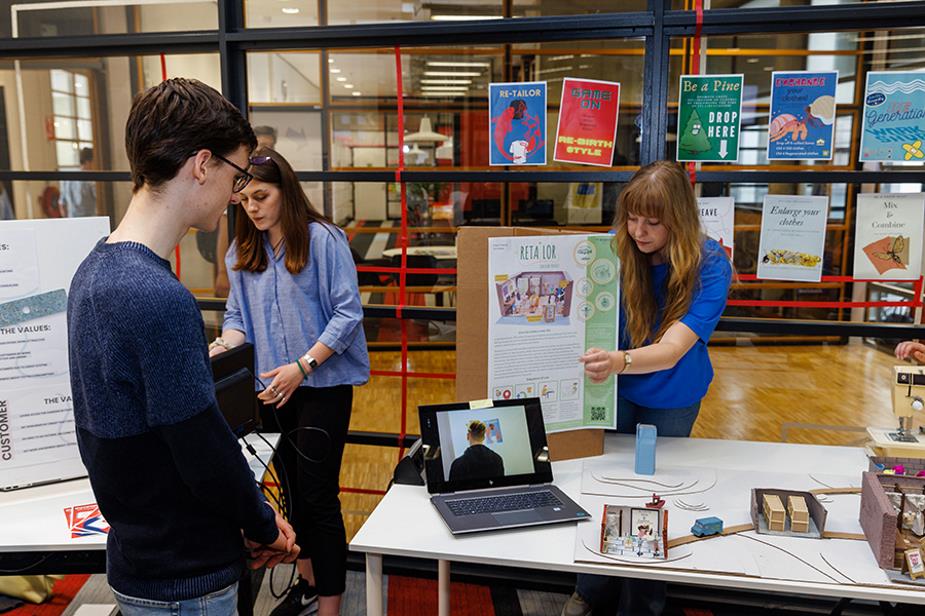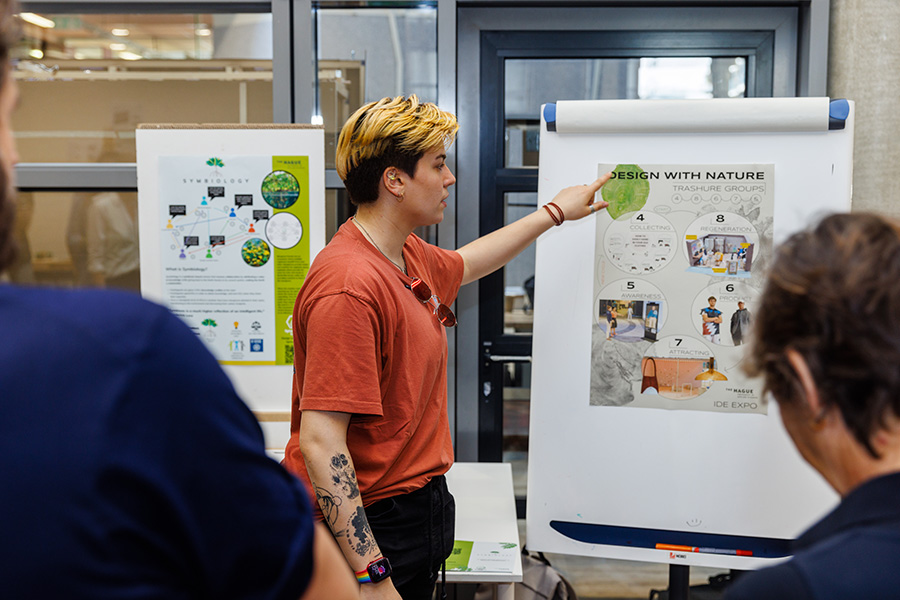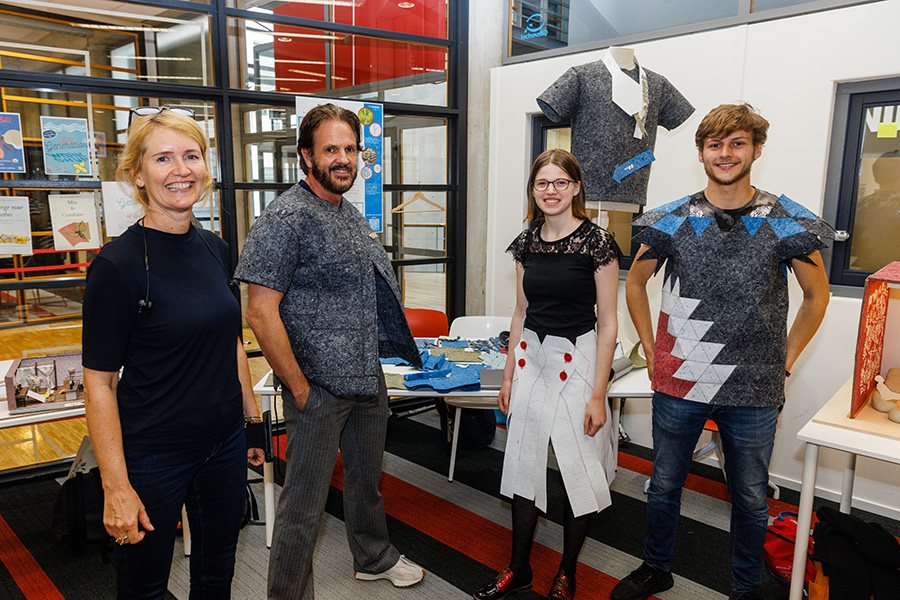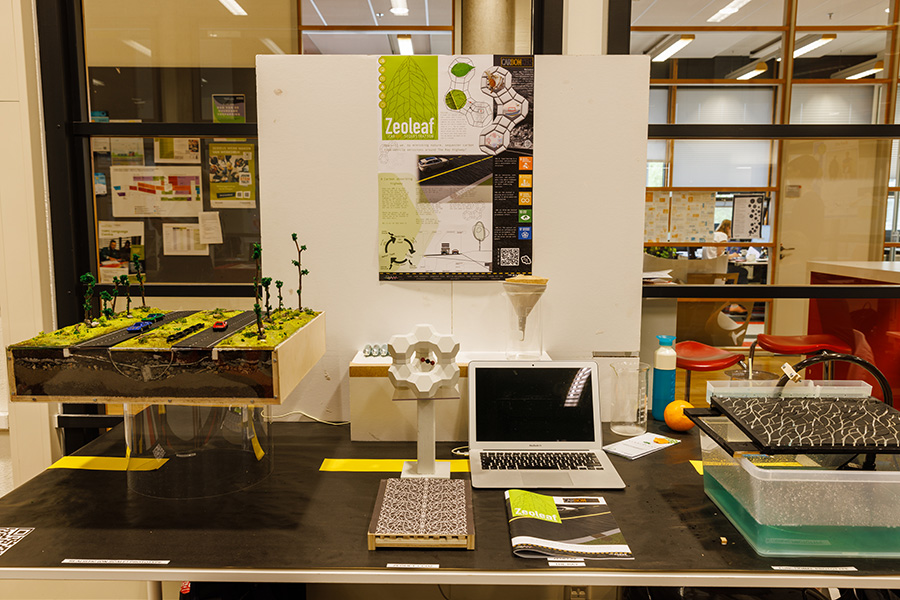Designing with Nature: student innovations
9 June 2022
An overwhelmingly inspirational day, the 19th of May saw the presentations of the Design with nature students in the context of project Trashure. Students were tasked with using nature to create sustainable design.

An overwhelmingly inspirational day, the 19th of May saw the presentations of the Design with nature students in the context of project Trashure. Students were tasked with using nature to create sustainable design. The designs and products that emerged were exceptional and all focused on different areas, with 5 Trashure teams focused on designing with nature; a beautiful poster displayed how their projects all fit together in a cycle(see below).Teaming up with Ray highway, a further 3 teams focused on projects to create sustainable highways with immense success.
Fishing for solutions
Teachers, colleagues, and collaborating organizations were invited to view models and presentations of the plethora of projects created. Walking through a buzzing room, an array of projects from different teams were on display. Students tasked with regeneration were inspired by the weaver ant that sews together leaves. “Retailor” provides customers with a space to reinvent their old clothes. Recycling the clothes, “ it’s like a coporo fish who uses waste and modifies it to redistribute it again”. Another team, tasked with raising awareness were inspired by the cuttlefish to produce a 3D mirror that displays you in sustainable outfits you can purchase and it helps “bring together sustainable brands”. They were most proud of the process that it took to finalize their design “ I am proud of how we got here- in the beginning we were very vague on how to raise awareness- which could be anything so we had more than 100 ideas”

Spinning spiders
Standing out rather literally as they proudly wore the clothes they created out of recycled felt. The team, charged with the product aspect of the cycle used recycled felt- a stiff material, and demonstrated how they used a funnel mechanism, inspired by the garden spider that pushes proteins through the same way, to soften the material. Emulating snake skin they cut the material into small triangle patches that create more movement and give it a unique aesthetic. The point of pride for the team was in the process“ The amount of experimenting, coding, sewing patterns, and hard work that took a lot of time and I am proud [of that]”.
Ray Highway

Sticky decisions
One of three teams working with Ray highway to create sustainable highways are using biomimicry to create a product called sticky filter that, inspired by the Marine Salp, is using chia seeds and the bacteria streptomyces to “Fight against tire and road wear pollution on the highway”. They found critical lessons in the process too “ at one point we were stuck, but we made the decision to go in an entirely different direction- that was a big step.”
The beetle and the mollusk
No creature is too great or small to help design- this was shown in an effort to replicate the Ironclad beetle’s ability to absorb force “The compression is not focused on one spot but rather spread across the shell evenly distributing the force over the whole shell”, this small creature inspired the team to turn it into a safety railing for a highway that “deforms and disconnects on impact” which ensures cars slow down instead of crashing. ”. The 3rd and perhaps more successful team from the Ray Highway teams was the Carbonkels, who used Zeoleaf technology to capture CO2 in the highway runoff together with the rainwater. They learned chemistry from mollusks and coral to develop a design for the road surface to collect as much carbon as possible.
Learning to design within Ecosystems - Systems-Thinking
What was interesting from the set of student teams for both clients, was that the students found their place within the ecosystem they are trying to function. For example, the textile collection team is connected to the textile recycle team who is connected to the team looking to nature to make these textiles soft, and on to the design team (and then back to the retailors who start all over again with collection and recycling). The Trashure teams worked together with Sympany, the textile collector, with i-did, the company that turns unwanted textiles into reusable felt, with designer Ronald van der Kemp (RVDK) who designs Haute Couture for celebrities such as Lady Gaga and Michelle Obama and with retail and business expert (and lector Circular Business at THUAS), Professor Kim Poldner.

Inspirational Sustainability
The students from all teams were immensely proud of their work- rightfully so! The broad variety of products and ideas that emerge from using nature as a springboard were staggering. Whether it be through beetles, fish, spiders or snakes- students were able to take it in their stride to create sustainable innovations that left the audience of colleagues and partners from Trashure and Rayhighway in awe for what the future of designing with nature holds.
To see all the projects presented on the day follow this link below to watch videos, see posters of all designs and learn more about biomimicry.